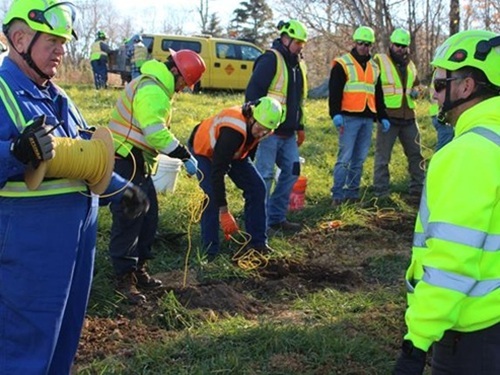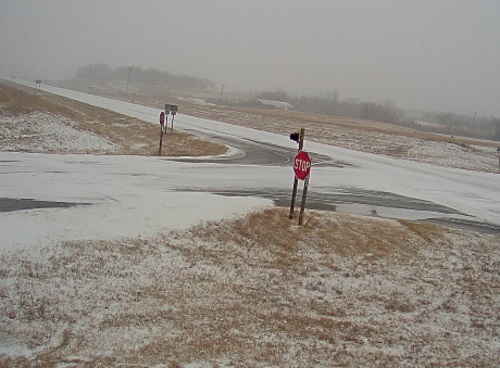More than $6 million in funds from the Kansas High Risk Rural Roads or HRRR program is going to 10 rural counties statewide to help improve the safety and efficiency of roads and local roadways.
[Above photo by the Kansas DOT]
“These improvements are vital to maintaining the infrastructure as many Kansans depend on rural roadways,” noted Governor Laura Kelly (D) in a statement.

“Our rural roads are an important component to the local and state economy. Programs like this ensure that commerce flows and Kansas families can travel the state safely,” she added.
The HRRR program is a federally funded state/local partnership initiative overseen by the Kansas Department of Transportation designed to improve safety on rural roads, with projects falling into one of two categories: Systemic, which encompasses a local roadway network, or site specific. Projects in the systemic category are 100 percent federally funded, while site-specific projects are 90 percent federally funded.
“Recognizing that Kansans use local roads to reach state highways [is why we] partner with cities and counties to help improve local infrastructure,” noted Julie Lorenz, Kansas DOT secretary.

“Working together provides opportunities for communities to strengthen their local road network to improve connections across the state,” she said.
Making improvements to rural roadways has become a focal point over the last several years, especially in the wake of the COVID-19 pandemic.
In 2019, the U.S. Department of Transportation unveiled the agency’s R.O.U.T.E.S. Initiative – short for “Rural Opportunities to Use Transportation for Economic Success” – at the annual meeting of the American Association of State Highway and Transportation Officials to address the “disparities” in rural transportation infrastructure in order to “tangibly improve safety and economic competitiveness” in all parts of the country.
[Editor’s note: The $1.2 trillion Infrastructure Investment and Jobs Act, signed into law in November 2021, codified that initiative into federal transportation statute.]
Additionally, a 48-page report released by national transportation research nonprofit TRIP in May 2020 indicated that America’s rural road network suffers from a $211 billion backlog in funding for needed repairs and improvements.
“The nation’s rural roads and bridges already faced a significant funding shortfall, and that will only be exacerbated by the looming reduction in state transportation revenues as a result of decreased vehicle travel due to the COVID-19 pandemic,” said Dave Kearby, TRIP’s executive director, in a statement at the time.
 States
States
NCDOT Staff Participate in ‘Explosive’ Technical Training
December 19, 2025 States
States

